Preparation is the most important step in the whole nickel plating process. If you want high quality plating almost all the sanding, buffing and polishing is done before plating. After lots of trial and error I finally found a good way to prepare the bolts and other parts of the bike.
 |
| Original bolt before preparation and plating |
1.Get rid of the major pitting.
I used the bench grinder to carefully shave off a thin layer. If the pitting is really bad/deep it maybe better to start with a new bolt from your local hardware store and turn this one into an "original" bolt.
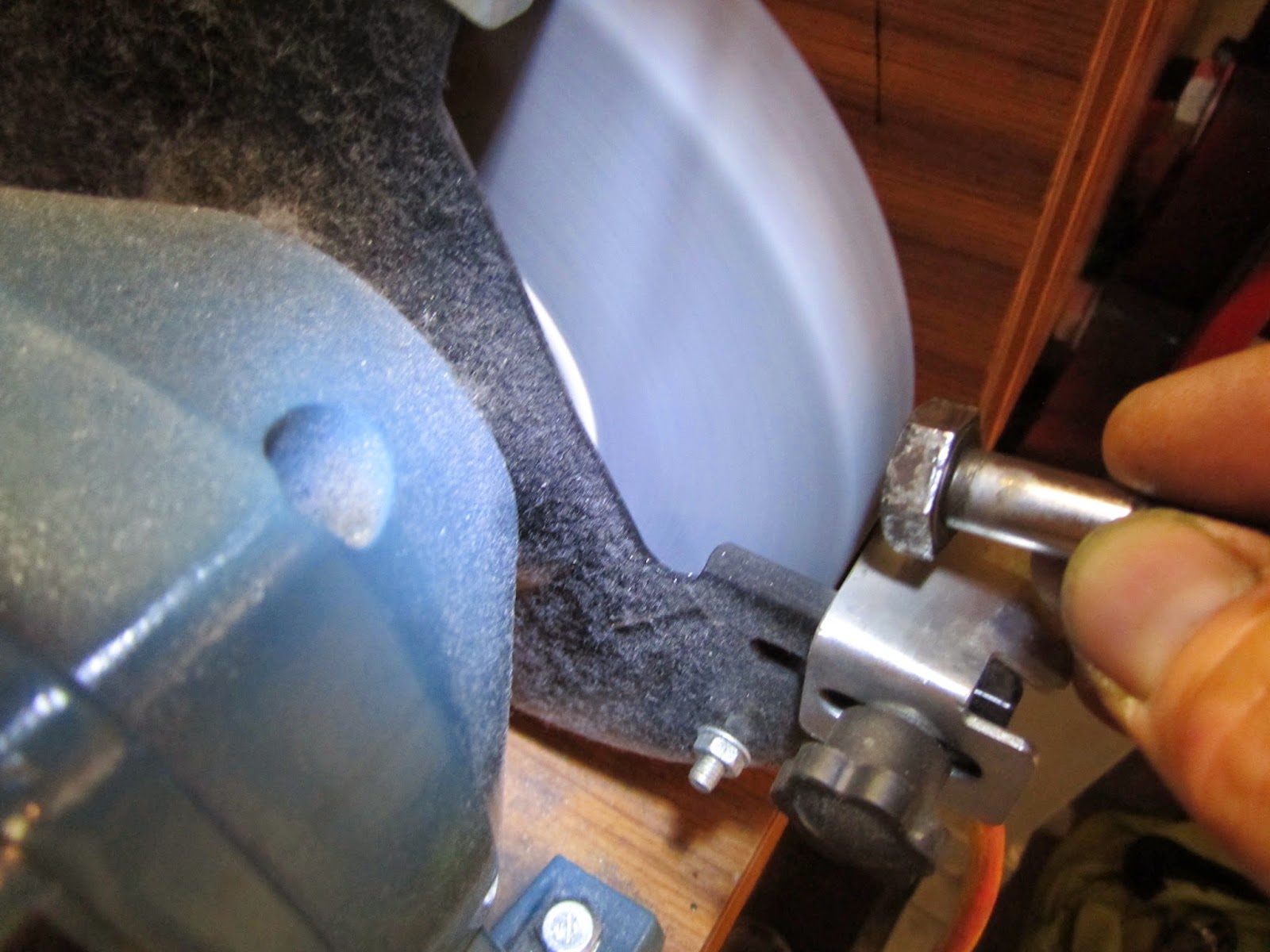 |
| Removing pitted top layer motorcycle bolt |
If you have a bigger part that's pitted you can also use a belt sander. I used it to get rid of the major pitting of the down pipe of my Yamaha 100 LS3.
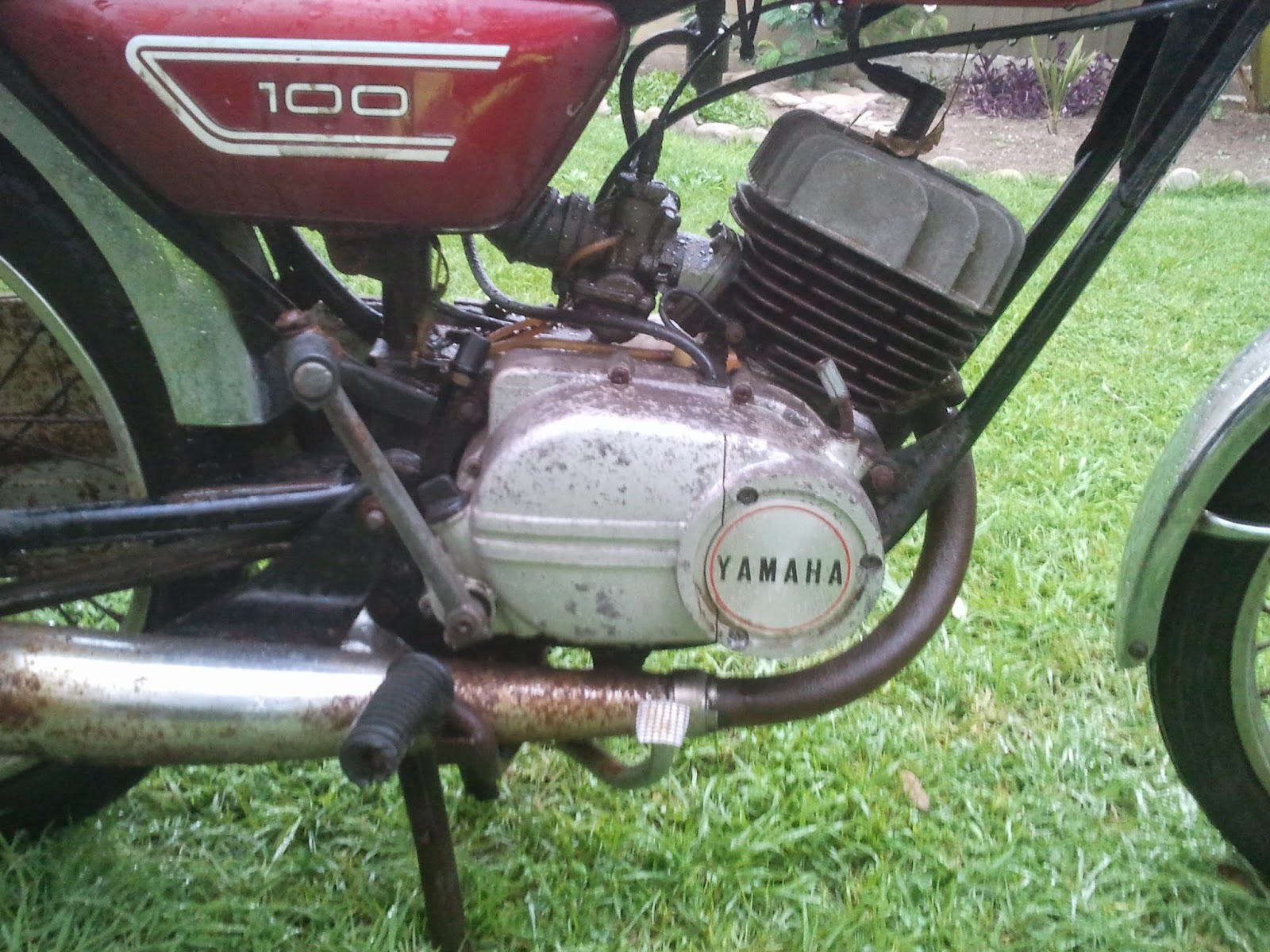 |
| Rusted down pipe Yamaha 100 LS3 |
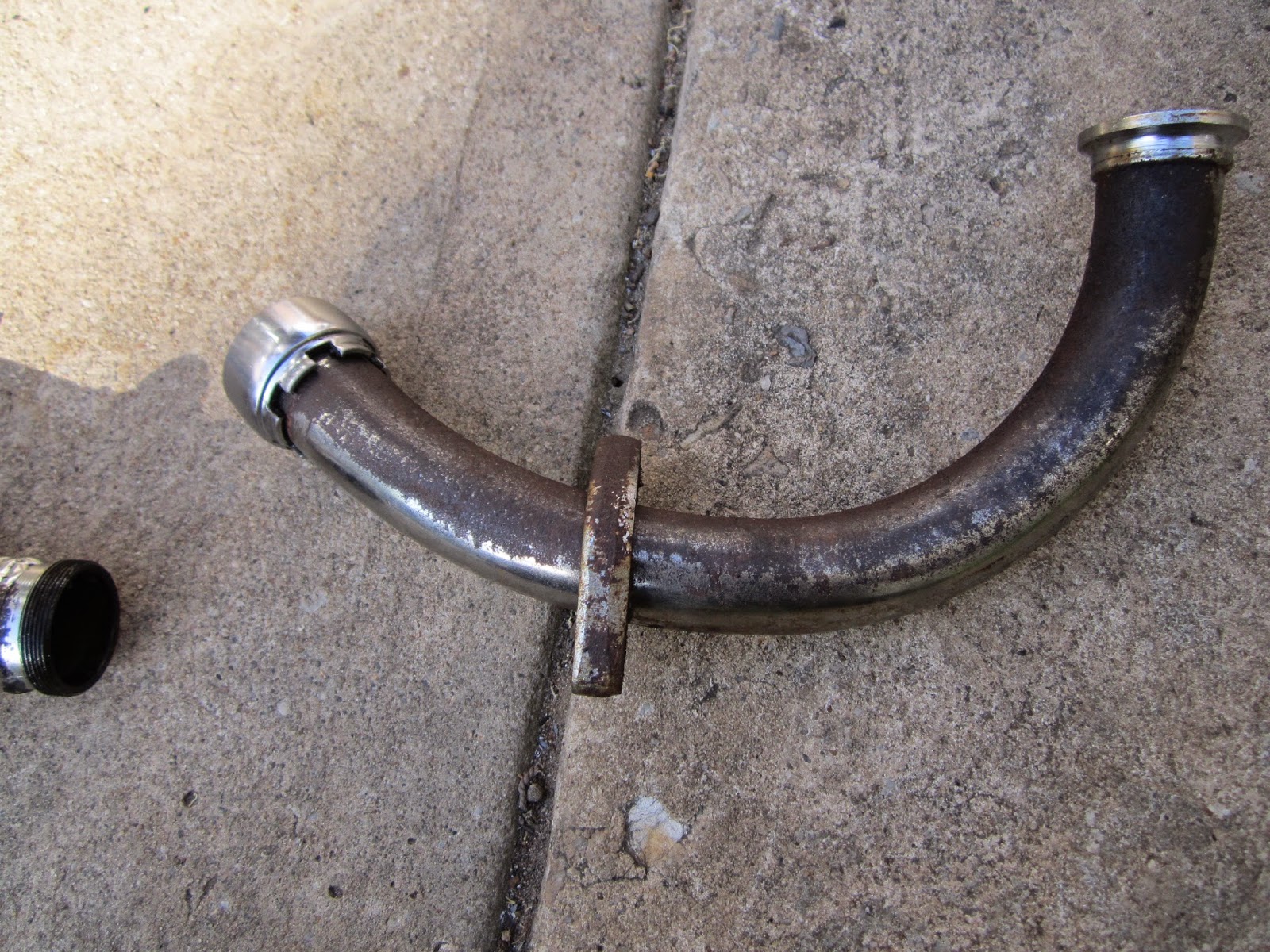 |
| Rusted down pipe Yamaha 100 LS3 |
 |
| Rusted front fork Yamaha LS3 |
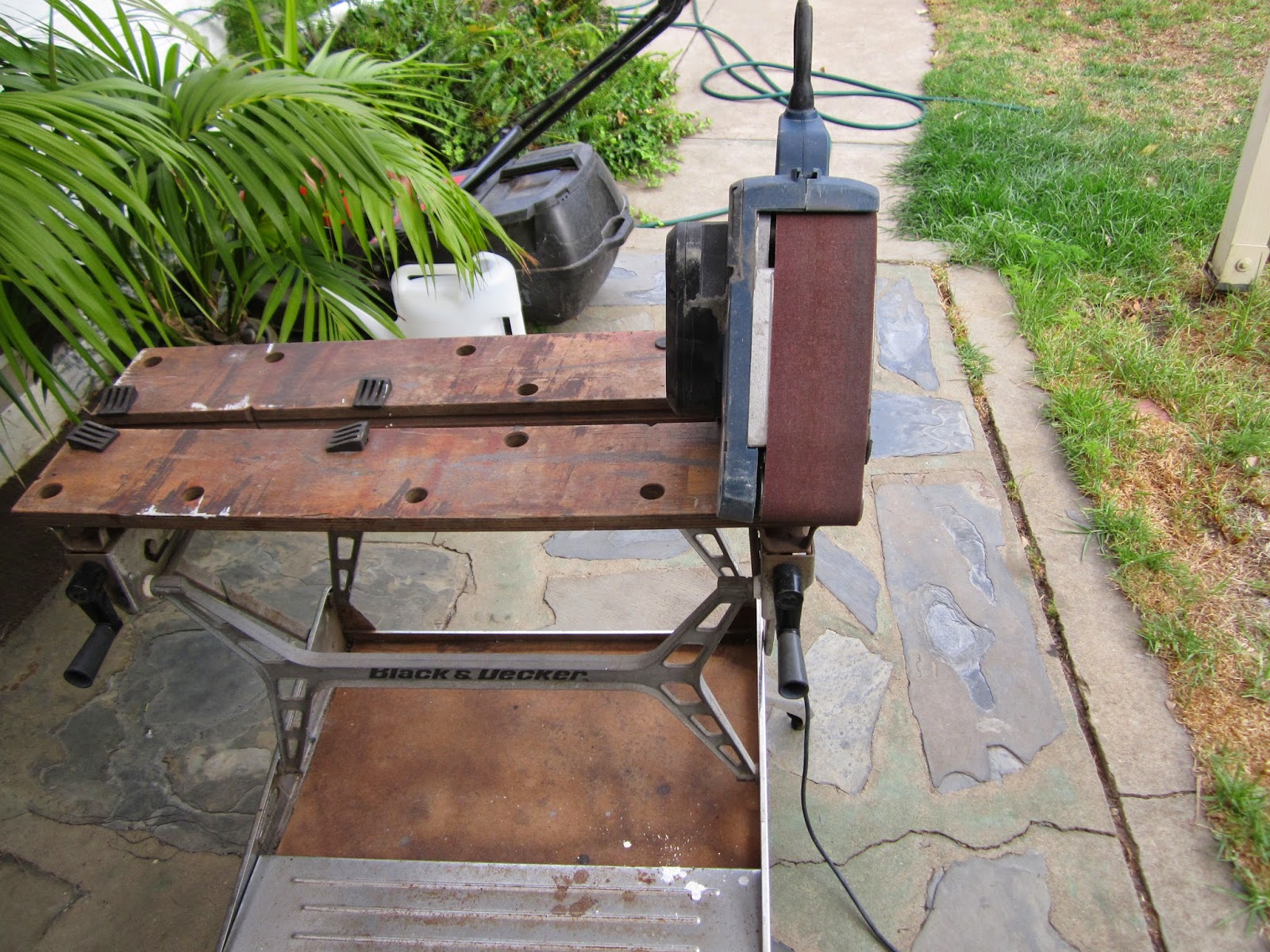 |
| Belt sander used to remove pitting from down pipe |
2.Get rid of the existing plating.
Zinc plated items can be pickled in hydrochloric acid, but chrome plated items are a bit harder to de-chrome. You can try it by sanding or grinding but also with electrolysis. You need a plastic tub big enough for your item, a couple of metal rods or plates, copper wire, carbonate/washing soda, water and a battery charger. I put the four metal rods in the corners of the tub and connected them with the copper wire. Then I filled the tub with water and mixed ca. 500-750 gram washing soda in it (the more the better ;). In the middle of the tub I put a metal rod so the bolts can be connected with copper wire. Make sure the copper wire from the neg (black -) doesn't touch the pos (red +) rod hanging over the tube. I played it safe with some ductape. Now connect the battery charger and switch on the power. You'll see the items hanging on the pos(red +) rod will start bubbling. It will take a couple of hours or maybe a day (depending on the type of battery charger) to remove the chrome plating. It won't damage the bare metal parts. I also tried baking soda but I think washing soda works better.
As soon as you switch on the power the solution turns green.
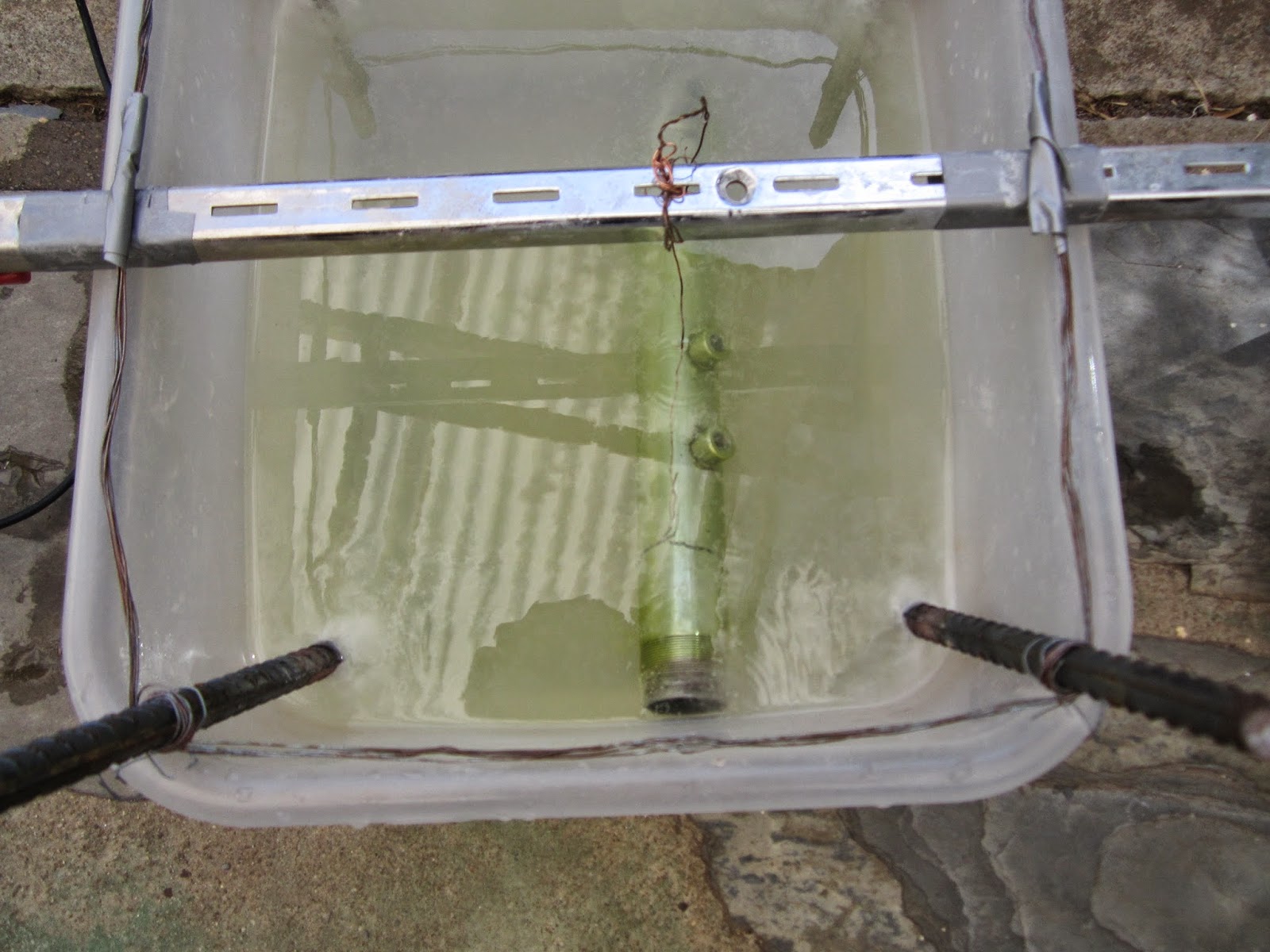 |
| Remove chrome plating with washing soda |
Underneath the chrome plating you'll find nickel or copper plating (with most parts). If you give this a good pickle there's not always a need to remove this layer as well. However, if you also want to remove the nickel layer (plating over bare metal is always better..) I use the following recipe:
Take a plastic or glass tub and make a solution water and hydrochloric acid. Add 30 ml (30%) hydrochloric acid for each Litre of water.
Grab a piece of pure lead and hang it into the solution. Connect the Neg (black -) with the lead Cathode and the Pos (Red +) with your item. Within 1 hour all the nickel will come of like aluminium foil. For the lead Cathode I used bead sinkers for fishing and made a "necklace" with copper wire.
Don't leave your part to long in the solution as it will result in pitting of your metal part. Try to keep the current low to avoid quick pitting. An old laptop charger will work better than a car battery charger.
Be careful with all those chemicals . Wear gloves, goggles and a mask. No responsibility accepted.
Tip: If you need to remove some rust, just swap the pos and neg wire of the washing soda solution.
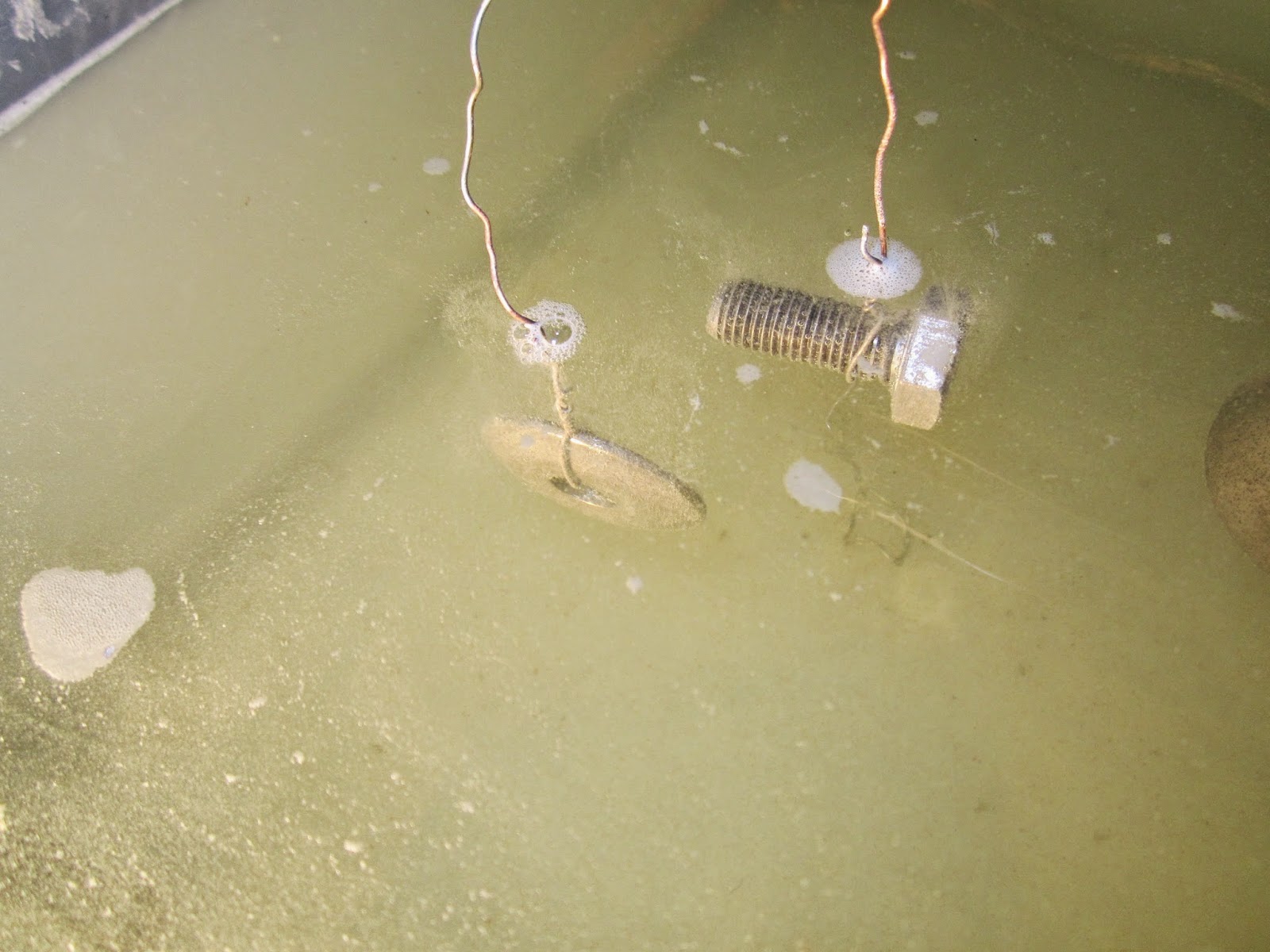 |
| Get rid of the old chrome plating |
 |
| Initial set up -removing nickel plating |
 |
Half of the nickel plating removed (took ca. 20 minutes),
I turned the fork 180 degrees to remove the other half |
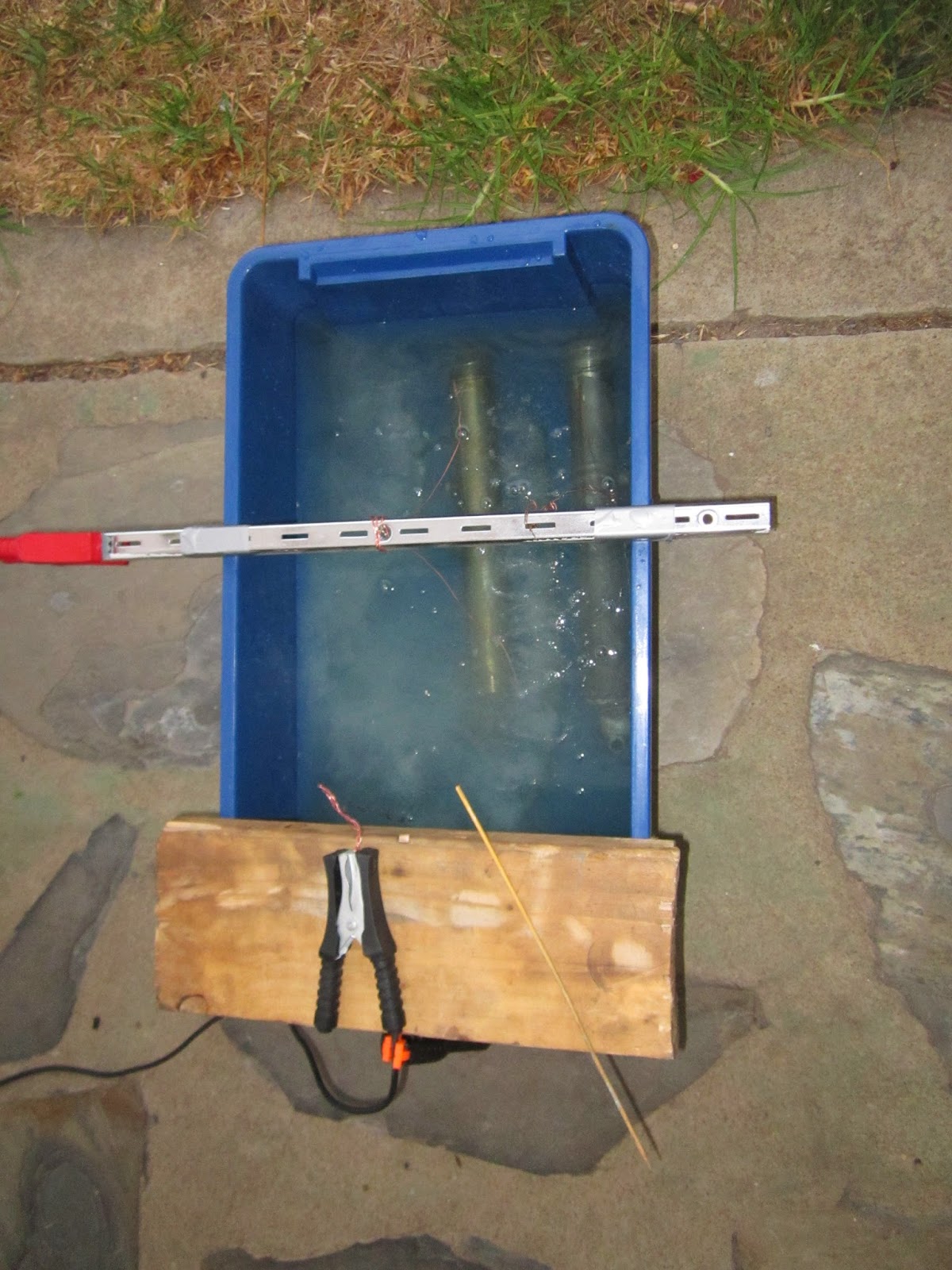 |
Because the neg wire got very hot (with the car battery charger
I used a piece of wood as insulator for the plastic tub
|
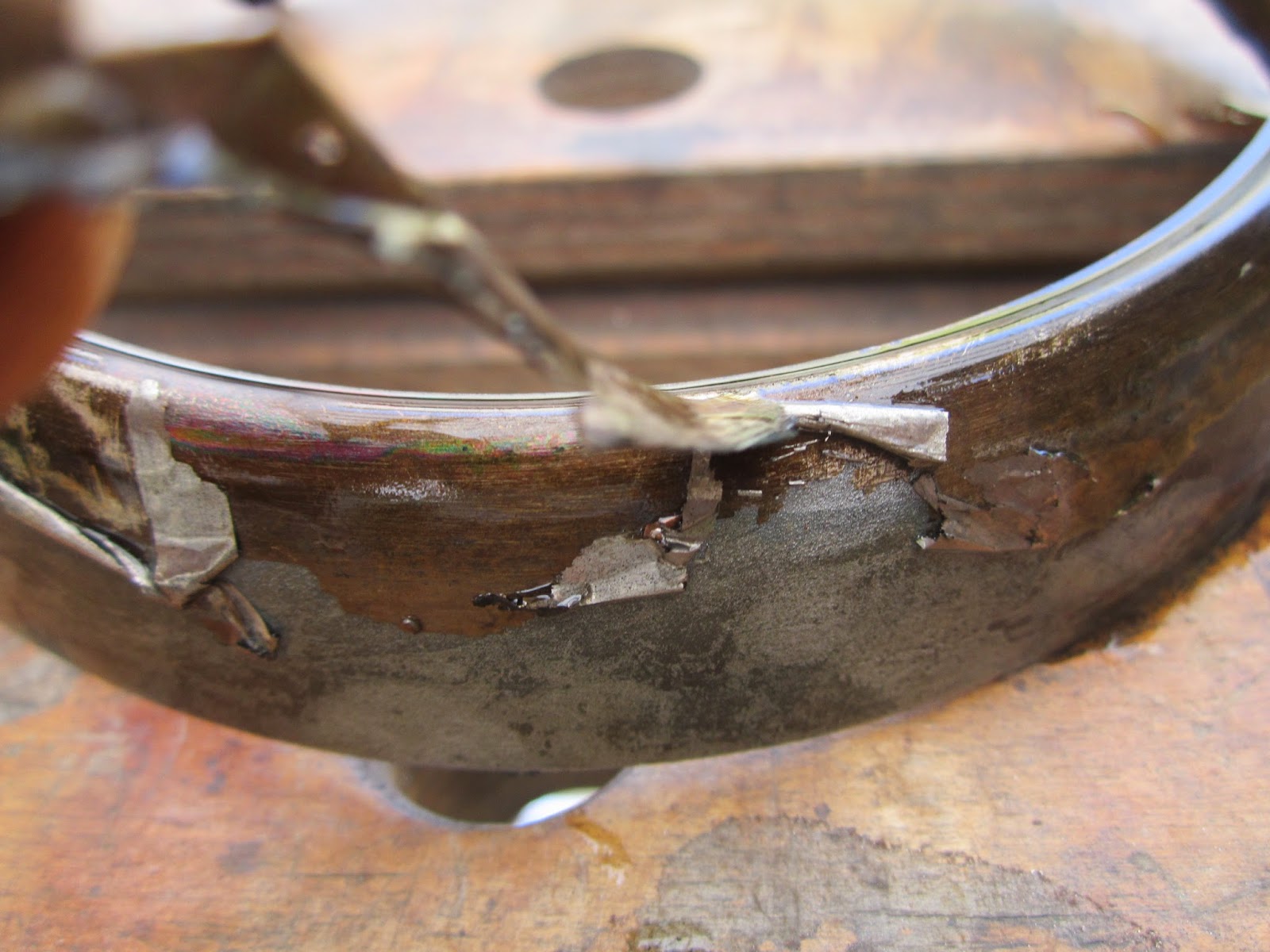 |
| removing old nickel plating from headlight bezel with lead cathode |
3. Sanding
If you want a high quality mirror like finish you have to sand your part. If it's still really pitted, start with grit 80, then 120-240-360-400-600-800-1000-1200-1500-2000. That's what I did with the rust pitted down pipe and all the pitted bolt heads. It took my a couple of hours to get a mirror finish on the down pipe. There were still a couple of pits, but sanding them down would make the metal very thin, so I just sanded the sharp edges off.
4. Acid Pickle
After everything is really smooth and shiny I dip the parts in Hydrochloric acid for a couple of minutes. Then rinse with water and dip the parts in Deox-Ionize, a sulphuric acid. After the acid dipping rinse well with water and wipe the object with wax and grease remover, connect it to the copper wires and put it in the nickel electrolyte. All these steps have to be done as quickly as possible to prevent flash rust.
BTW:
Never try to pickle cast iron!! It's porous and you'll never be able to get rid of the acid which will eat it's way trough the cast iron part and eventually destroy it.
Also; don't store your acid inside the shed. Even if it's in a locked container it will get in the air and attack every metal part in your shed.
5 Start plating
Now you can start nickel plating. Smaller parts, like bolts, can be plated in 60 minutes. For bigger parts like the down pipe I go for 90 minutes. If you want you can also plate the bolts for 90 minutes, this will give a them a thicker layer of nickel. Parts with a bigger surface need some extra time because the same current has to cover a bigger area. If you want to calculate the plating thickness see
http://yamaha-ls3.blogspot.com.au/2015/05/calculating-thickness-nickel-plating.html
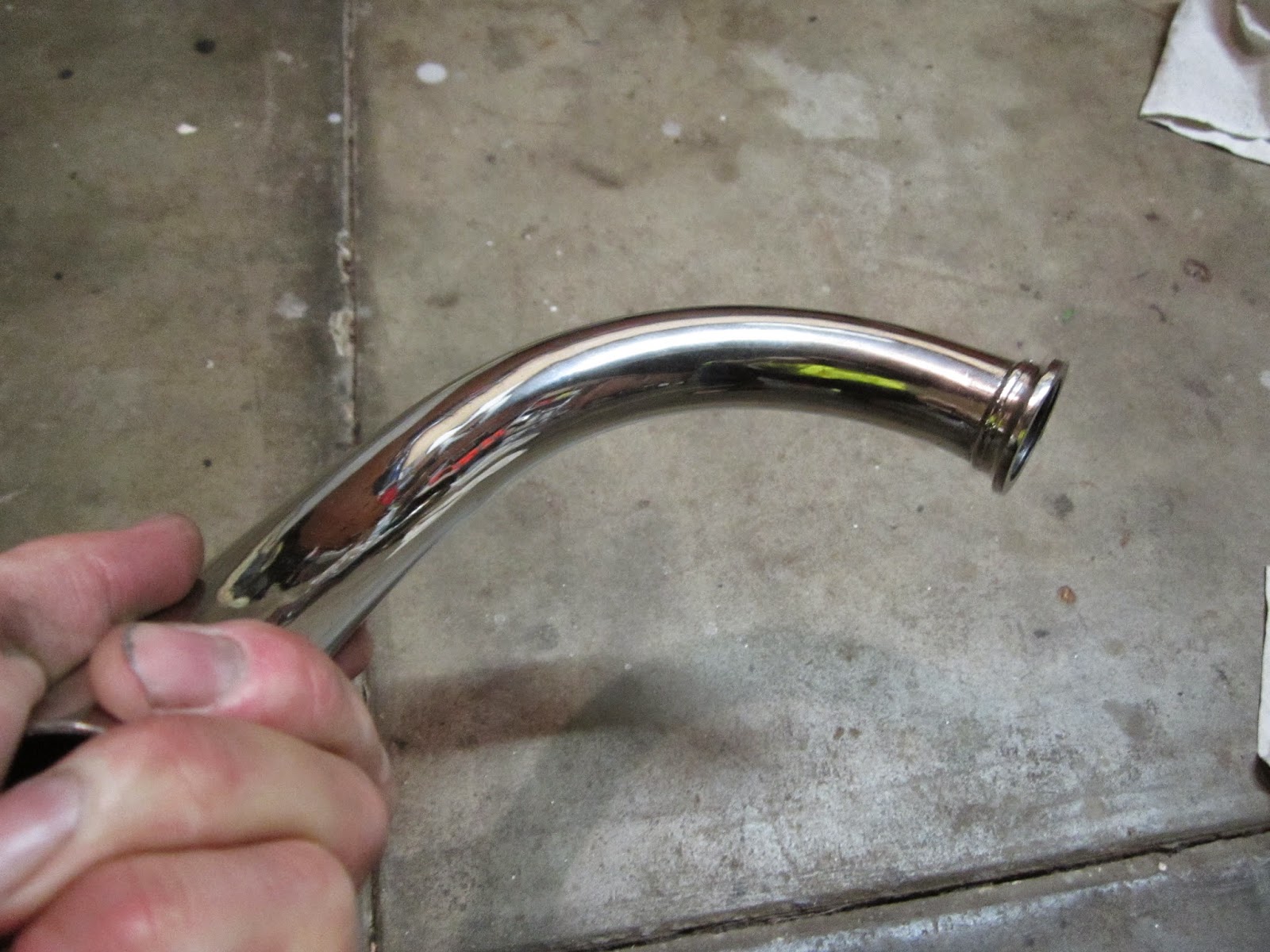 |
| Yamaha LS3 down pipe after plating |
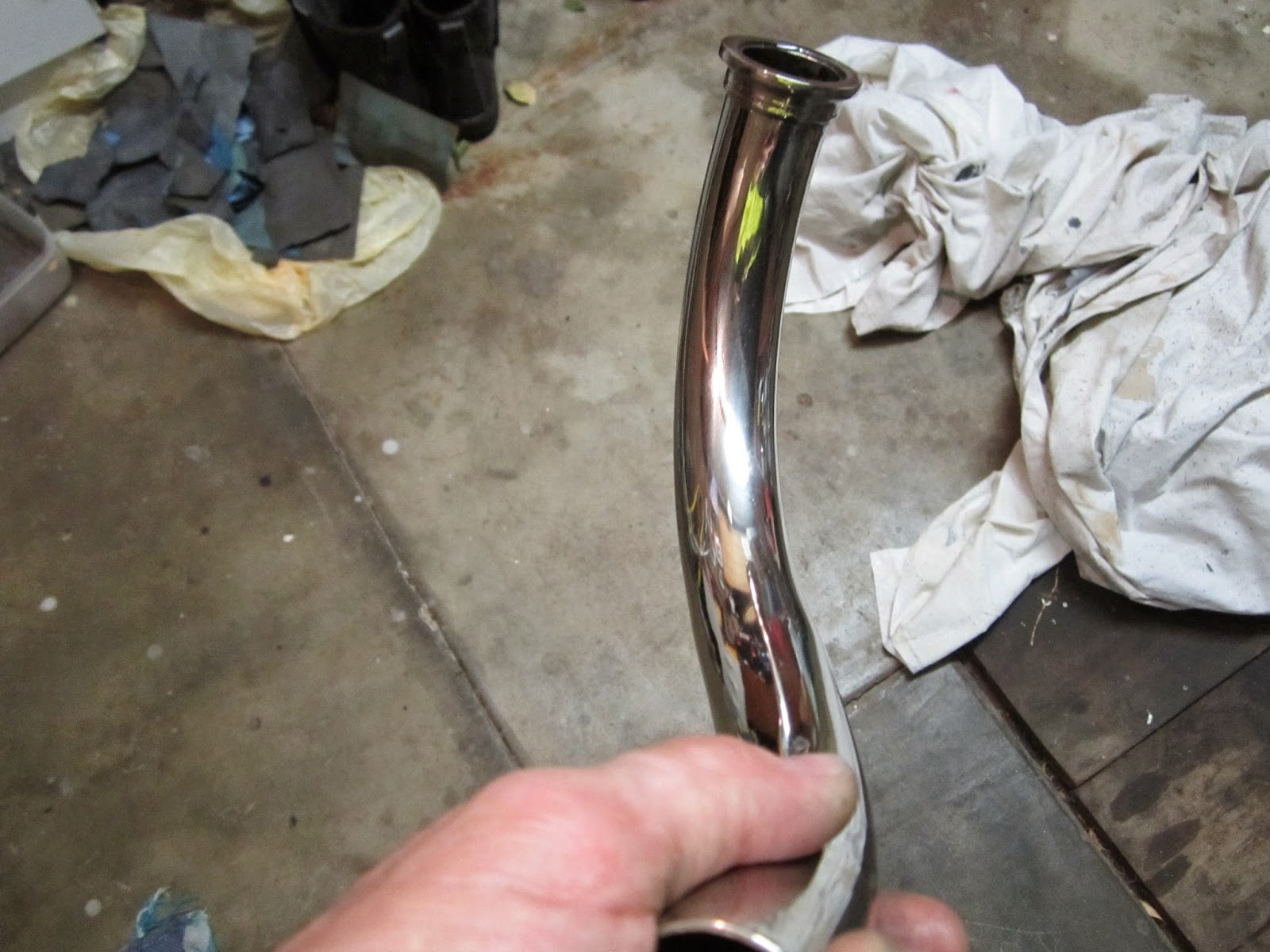 |
| Yamaha LS3 down pipe after nickel plating |
As vintage (I mean very vintage ;)) exhausts used to have a nickel plated finish I'm not to worried about not having the chrome plating on top.
Btw; did you know that the famous Rickman frames were nickel plated ?
6. Buffing and polishing
Right after you take out the parts of the electrolyte, rinse them with water and polish them by hand or with a bench buffer/polisher. Otherwise the surface will turn dull within a couple of minutes.
7. Treating with A-Glaze
To prevent the nickel plated parts from oxidizing I treat them with A Glaze. This will last for a least 5 years. I'm not sure if the A Glaze can handle the heat from the exhaust so I left the down pipe as it was.
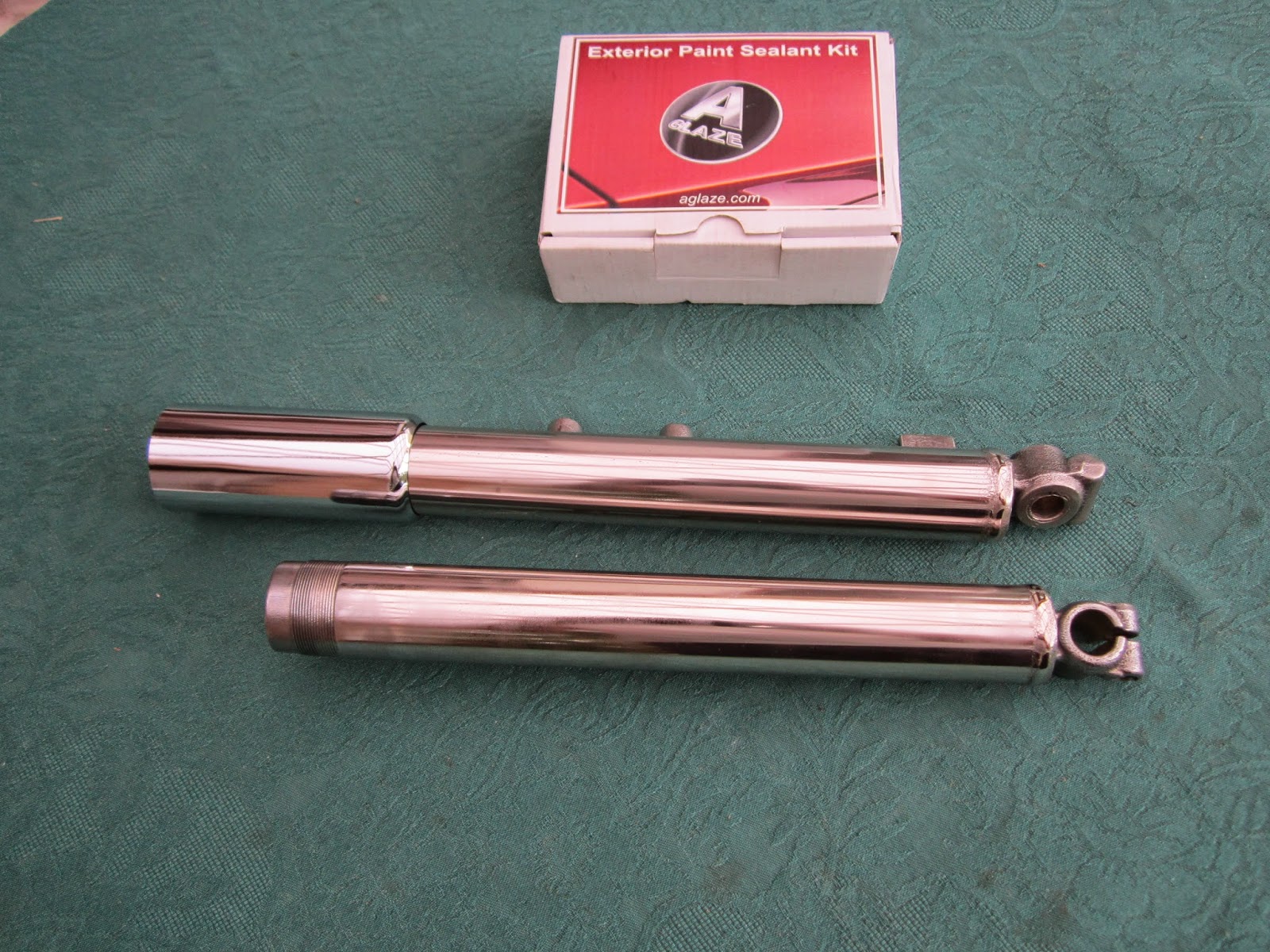 |
| DIY Nickel plated front forks Yamaha LS3 |
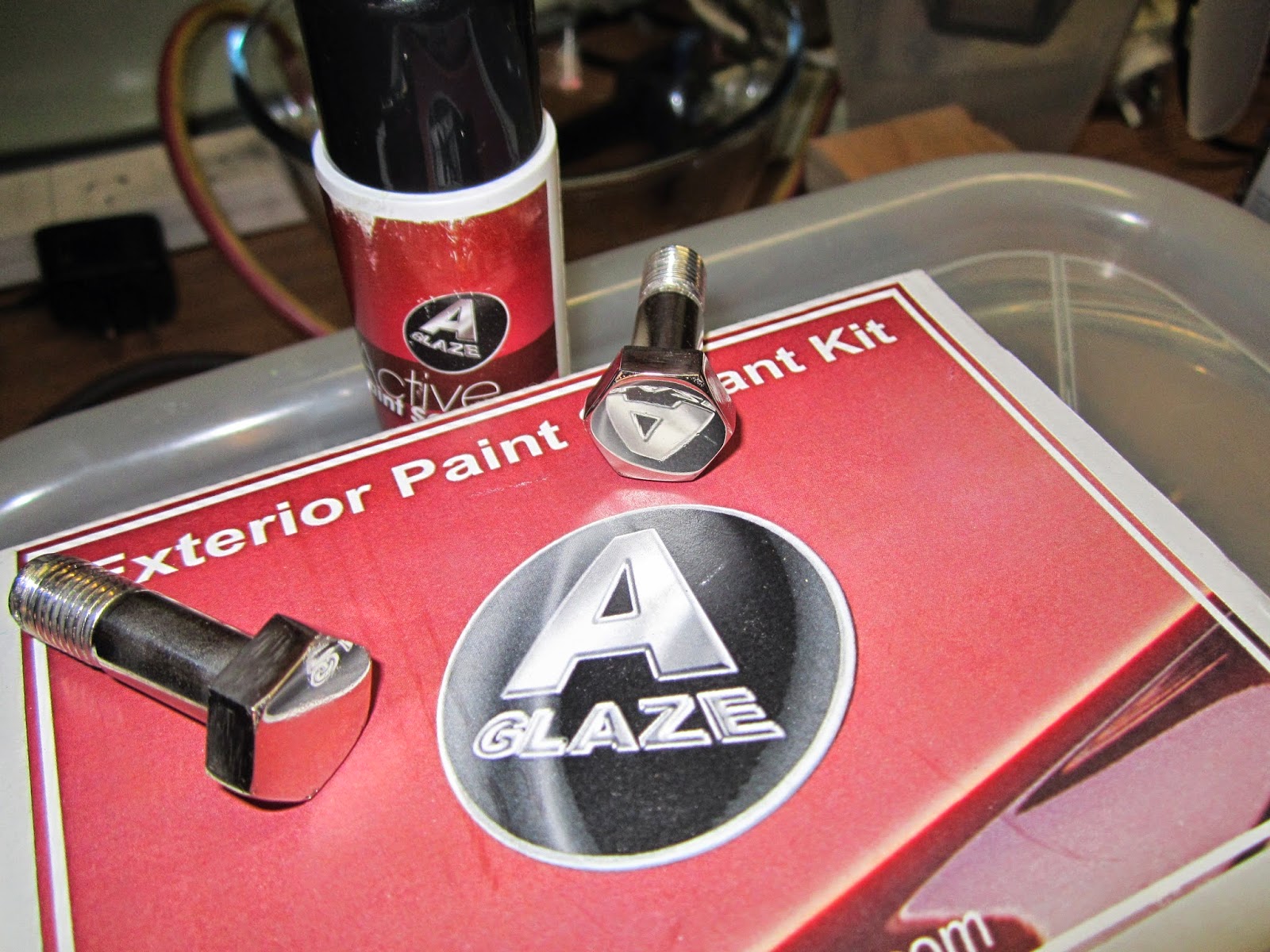 |
| Original bolts after preparation and nickel plating |

